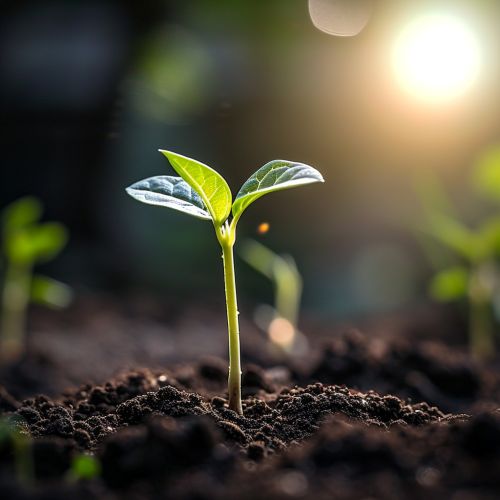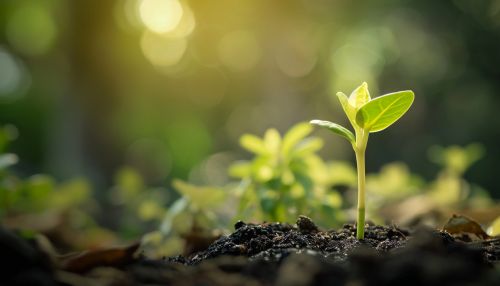Photomorphogenesis
Introduction
Photomorphogenesis refers to the growth and development of plants in response to light. It is a vital process in the life cycle of a plant, influencing its morphology, timing of flowering, seed germination, and shade avoidance. The process is regulated by a variety of photoreceptors, including red/far-red light-absorbing phytochromes, blue/UV-A light-absorbing cryptochromes and phototropins, and UV-B light-absorbing UVR8 proteins.


Light Perception in Plants
Light perception in plants is mediated by photoreceptors, which are proteins that can absorb light and initiate cellular responses. The primary photoreceptors involved in photomorphogenesis are phytochromes, cryptochromes, phototropins, and UVR8 proteins.
Phytochromes
Phytochromes are a family of photoreceptor proteins that absorb red and far-red light. They exist in two interconvertible forms: Pr, which absorbs red light, and Pfr, which absorbs far-red light. The conversion between these two forms allows plants to sense changes in the light environment and adjust their growth and development accordingly.
Cryptochromes
Cryptochromes are photoreceptor proteins that absorb blue and UV-A light. They play a crucial role in regulating plant growth and development, including seed germination, de-etiolation, and the timing of flowering.
Phototropins
Phototropins are blue light receptors that mediate phototropism, the directional growth of plants in response to light. They also regulate other light-dependent processes, such as chloroplast movement and stomatal opening.
UVR8 Proteins
UVR8 proteins are photoreceptor proteins that absorb UV-B light. They play a key role in mediating the plant's response to UV-B radiation, including the induction of UV-B protective responses and the regulation of plant growth and development.
Light-Dependent Developmental Processes
Photomorphogenesis regulates a variety of light-dependent developmental processes in plants.
Seed Germination
Light is a critical factor in seed germination for many species. In some cases, light can trigger the germination process, while in others, it can inhibit it. The effect of light on seed germination is primarily mediated by phytochromes and cryptochromes.
De-Etiolation
De-etiolation, also known as greening, is the process by which a plant transitions from a state of etiolation, or growth in darkness, to growth in light. This process is characterized by the expansion of the cotyledons, the initiation of photosynthesis, and the cessation of hypocotyl elongation. De-etiolation is regulated by a complex interplay of photoreceptors, including phytochromes, cryptochromes, and phototropins.
Flowering Time
The timing of flowering is a critical determinant of a plant's reproductive success. Light influences the timing of flowering through the photoperiodic pathway, which senses changes in day length. This pathway is primarily regulated by phytochromes and cryptochromes.
Shade Avoidance
Plants have evolved a range of strategies to avoid shading by neighboring plants, collectively known as the shade avoidance syndrome. These strategies include increased elongation growth, upward leaf movement, and early flowering. The shade avoidance response is primarily mediated by phytochromes, which can sense changes in the ratio of red to far-red light that are indicative of shading.
Conclusion
Photomorphogenesis is a complex process that regulates a wide range of light-dependent developmental processes in plants. Through the action of photoreceptors, plants are able to sense changes in their light environment and adjust their growth and development accordingly. Understanding the mechanisms of photomorphogenesis is not only of fundamental interest but also has practical implications for agriculture and horticulture.
